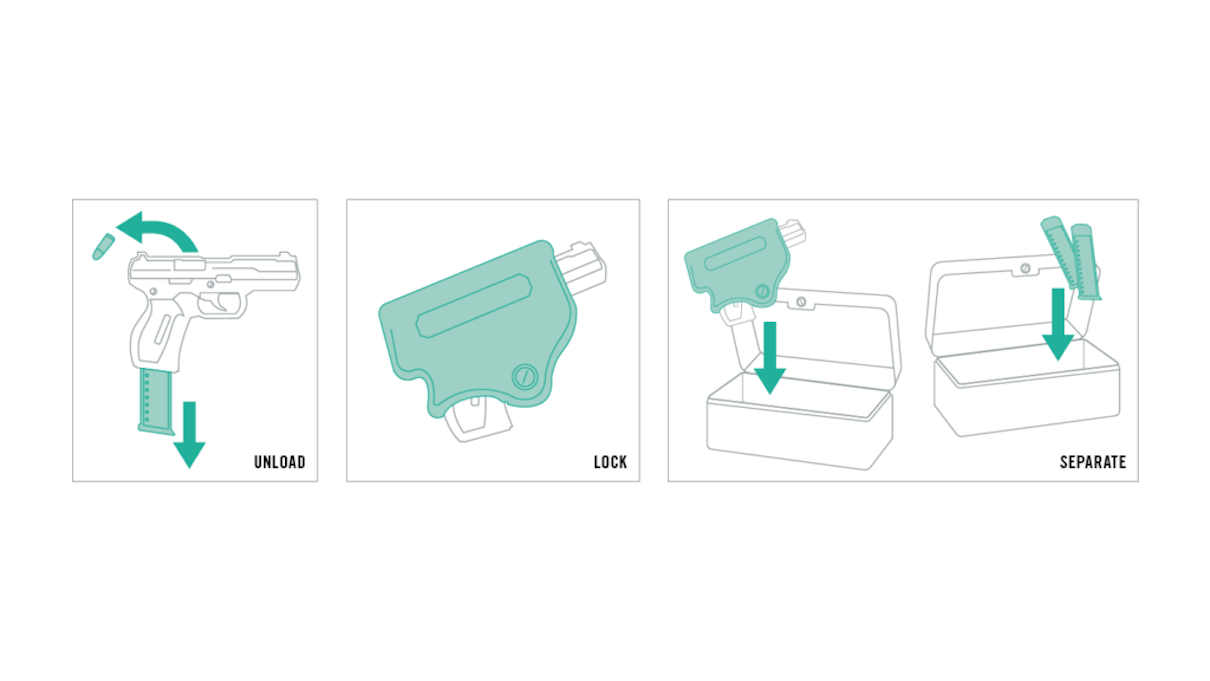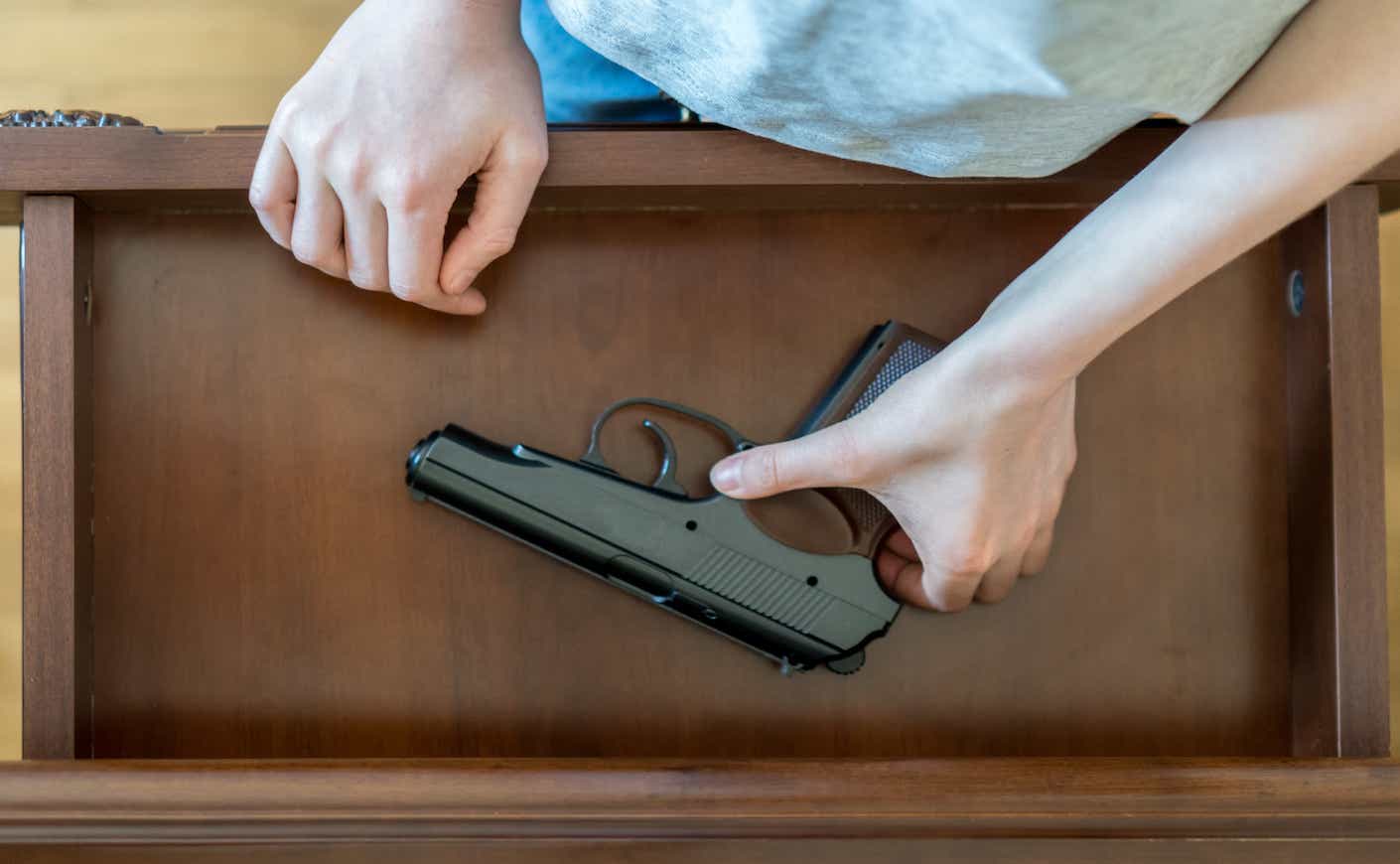In 2018, Ethan Song died after accidentally shooting himself with a gun he found in a cardboard box at his friend’s house in Guilford, Connecticut. Song was only 15 years old. In 2019, Connecticut passed Ethan’s Law to strengthen the state’s firearm storage requirements.
Song isn’t the only minor who lost his life in such a tragic accident. This is fairly common in a nation where approximately 54 percent of gun owners leave their firearms accessible and unsafely stored, many with the law’s permission. Guns are the leading cause of death for children under the age of 18. And among the guns used by youth for suicides, unintentional shootings, and school shootings, between 70 and 90 percent of the firearms are acquired at home, or at the homes of friends and relatives.
About 4.6 million children in America live in homes with unsecured guns. And three out of four school shootings are committed with a gun from home. “Protecting our loved ones and reducing gun violence really comes down to getting adult gun owners to secure their guns, which reduces access and is key to preventing school shootings,” gun violence prevention activist and founder of Moms Demand Action Shannon Watts tells KCM. “We know that secure gun storage laws work and that when states act to pass these laws, it creates a culture of responsibility around gun ownership.”
What are secure storage laws?
Secure storage laws mandate that gun owners lock up their firearms, and resultantly prevent unauthorized access. Safe storage is essential to ensure that minors don’t get access to firearms and accidentally injure or kill themselves or others. Safe gun storage is also crucial to ensure that people with ill intentions aren’t easily able to access or steal guns, and use them to cause harm.
Simply put, gun storage saves lives. That’s not to say that it’s a panacea for all gun-related issues, but it is a step in the right direction.
According to Watts, this work has become even more important and urgent in the wake of the pandemic. “Tens of millions of guns were sold during the Covid crisis. We also know that more and more people live in states that don’t require training when you have a gun — 21 states have now passed something called “permitless carry,” which strips the background check and the gun safety training requirements. So it’s more important now than ever that gun owners understand that guns should be locked, unloaded, and separate from ammunition.”
In a world with increased gun ownership, where more minors are getting access to these lethal weapons, secure storage can significantly reduce the number of unintentional shootings that lead to death and injuries among children.
Do gun storage laws actually have an impact?
Everytown Research finds that households with firearm locks have 85 percent fewer unintentional injuries than those without. Need we say more?
Based on data from 2070 shootings between 2015 and 2020, the #NotAnAccident index found that among the states with the lowest unintentional child shooting rates, 9 out of 10 had secure gun storage laws, especially ones focused on child access. On the other hand, the 10 states with the highest unintentional shootings had no secure storage laws or had laws that applied in very limited circumstances. While Hawaii, New Hampshire, and Rhode Island had no unintentional shooting injuries, Louisiana, Alaska, and Mississippi had the highest number of injuries and deaths. This data highlights that the right policy action can make a big difference in the safety of minors.
Which states have secure storage laws?
At this time, 23 states, including California, Colorado, and Massachusetts, have laws that mandate secure storage. Among these, 15 states have laws that only kick in after the child has gained access to the firearm, while others have laws that apply when the minor may or is likely to access the weapon. According to Everytown, “the strongest systems have consequences for any failure to secure a gun while less-strong policies penalize gun owners only if a child actually gains access to a firearm.”
According to Watts, strong policy action on this matter includes “secure storage laws, child access prevention laws, and notifications to families about secure gun storage through school. But all of those have to rest on a foundation of gun safety in the first place.” Watts finds that California is leading by example when it comes to secure storage: “In California, there are background checks and laws that keep guns away from domestic abusers. There are red flag laws. And all of those are important and work in conjunction with secure storage. In fact, California just passed the first-of-its-kind state law that will require all public school students to get that secure storage notification.”
From gun laws to gun storage
Today, the United States leads high-income nations in gun deaths, with 12 gun deaths for every 100,000 people, the next country on the list, Switzerland has 2.8 deaths and France 2.4 deaths. Here’s how bad the situation is: With just 4 percent of the world’s population, the United States has 35 percent of global firearm suicides. As political debate and disagreement continue on the constitutional right to bear arms, the human need for safety is being challenged.
In the aftermath of the May 2022 Uvalde, Texas shooting, Matthew McConaughey arrived at the White House, with hopes of uniting representatives on both sides of the aisle in their shared humanity. “Can both sides rise above?” he asked. “Can both sides see beyond the political problem at hand and admit that we have a life preservation problem on our hands?”
The idea was simple (and crucial): Even if the nation can’t agree on whether the Second Amendment that gives Americans the right to bear arms should still be valid or on how strict gun laws should be, Americans can at least agree that no child should be afraid that they won’t return home once they go to school on a regular, sunny day.
In fact, Watts finds that the nation actually agrees on gun-sense laws. “Seventy percent of all Americans, including Republicans and gun owners, support common sense gun laws, like a background check on every gun sale. So I’m not sure I can think of an issue that Americans agree more on than gun safety right now. It’s really important to remember that the only place this is polarizing is among a very vocal minority of rightwing lawmakers,” says Watts.
So, the natural next question is, if the nation agrees that gun sense laws are important and secure storage can save lives, what is preventing progress on this issue? Watts explains that progress is taking place, but incrementally. “We’re making huge progress. But what we’re seeing in the states is really a reflection of what we’re seeing in America, which is polarization, not around guns, but around politics. And so even if Americans support common sense gun laws, we still see them sometimes voting for these extremists who have excited the base around different issues.” She explains, “I think what we’re seeing is that in red states, lawmakers who are elected are weakening gun laws, and in blue states, lawmakers who are elected are strengthening gun laws. But there is a group of extremist lawmakers in red states who are not listening to constituents who support common sense gun laws — they’re doing the bidding of the gun lobby instead of their constituents.”
What can we do?
To begin with, of course, if you have a gun, store it safely. Tell those around you to do the same — make phone calls, send messages, maybe even scream from your terrace. Here’s how you can safely store a firearm:

It’s fairly simple. Everytown Research suggests that gun owners store their firearms in the following way to ensure safety:
1. Unload the gun, removing all ammunition, including any chambered rounds.
2. Lock the unloaded firearm with a locking device or in a locked location such as a safe box.
3. Store the ammunition in a separate, safe location.
Watts also recommends voting for gun-sense candidates in the November midterm elections. She says we have to make sure we support candidates who are in favor of gun safety, background checks, secure storage, and who want to raise the age to buy firearms. Gun Sense Voter has a list of candidates, up and down the ballot, who are committed to implementing better gun laws.
Just as most agree that children should be able to return home safely from their schools, so should they agree that no child should lose their life because of an accident originating from poorly stored guns.









